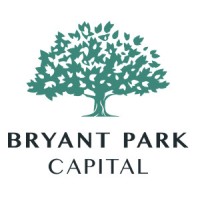Trends and Key Developments Impacting the Litigation Finance Market

 Public
Public

Bryant Park Capital (“BPC”) announced today that Sigma Funding has recently closed a $35 million senior credit facility with a bank lender. Sigma Funding is a rapidly growing litigation finance company focused on providing capital solutions across the legal ecosystem.
Sigma’s experienced executive team oversees a portfolio of businesses spanning insurance-linked litigation and other sectors, bringing a proven track record of successful growth and meaningful exits.
Bryant Park Capital, a leading middle-market investment bank, served as financial advisor to Sigma Funding in connection with the transaction.
“Bryant Park Capital was an indispensable advisor to Sigma and worked closely with our management team throughout the process,” said Charlit Bonilla, CEO of Sigma Funding. “BPC’s experience in the litigation finance space was critical in identifying potential banking partners and ultimately structuring our credit facility. Their extensive industry knowledge helped bring this deal to a successful close, and we are grateful for their support. We look forward to doing more business with the BPC team.”
About Sigma Funding
Founded in 2021, Sigma Funding is a leading New York–based litigation funding platform that provides pre- and post-settlement advances to plaintiffs involved in contingency lawsuits, as well as financing solutions for healthcare providers and attorneys. The company is the successor to the founders’ prior venture, Anchor Fundings, a pre-settlement litigation funder that was acquired by a competitor.
For more information about Sigma Funding, please visit www.sigmafunding.com.
About Bryant Park Capital
Bryant Park Capital is an investment bank providing M&A and corporate finance advisory services to emerging growth and middle-market public and private companies. BPC has deep expertise across several sectors, including specialty finance and financial services. The firm has raised various forms of credit and growth equity and has advised on mergers and acquisitions for its clients. BPC professionals have completed more than 400 engagements representing an aggregate transaction value exceeding $30 billion.
For more information about Bryant Park Capital, please visit www.bryantparkcapital.com.
Invenio has announced the addition of John J. Hanley as a partner, bolstering the firm’s bench in litigation finance, claim monetization, and structured finance. Hanley joins Invenio with a practice that sits squarely at the intersection of complex commercial litigation and sophisticated financial structuring, advising a wide spectrum of market participants including litigation funders, claimholders, law firms, hedge funds, investment funds, and specialty finance providers.
According to Invenio's website, Hanley brings a particular focus on structuring, negotiating, and executing advanced funding arrangements across the full litigation finance lifecycle. His experience spans single-case funding, portfolio transactions, and bespoke claim monetization structures, with a notable specialization in prepaid forward purchase agreements. In addition, Hanley has advised extensively on secured lending transactions involving banks, commercial lenders, and alternative capital providers—experience that aligns closely with the hybrid legal-financial nature of modern litigation funding deals.
A post on LinkedIn announcing the move highlights that Hanley’s practice is designed to support both the capital side and the legal side of funded disputes, an increasingly important capability as funding arrangements grow more complex and interconnected with broader capital markets. His background enables him to navigate not only the legal risks inherent in funding structures, but also the financial and regulatory considerations that sophisticated investors expect to see addressed at the outset of a transaction.
Malaysia has officially overhauled its legal framework for third-party funding in arbitration, marking a significant development in the country’s dispute finance landscape. Effective 1 January 2026, two key instruments, the Arbitration (Amendment) Act 2024 (Act A1737) and the Code of Practice for Third Party Funding 2026, came into force with the aim of modernising regulation and improving access to justice.
An article in ICLG explains that the amended Arbitration Act introduces a dedicated chapter on third-party funding, creating Malaysia’s first comprehensive statutory foundation for funding arrangements in arbitration. The reforms abolish the long-standing common law doctrines of maintenance and champerty in the arbitration context, removing a historical barrier that could render funding agreements unenforceable on public policy grounds.
The legislation also introduces mandatory disclosure requirements, obliging parties to reveal the existence of funding arrangements and the identity of funders in both domestic and international arbitrations seated in Malaysia. These changes bring Malaysia closer to established regional arbitration hubs that already recognise and regulate third-party funding.
Alongside the legislative amendments, the Code of Practice for Third Party Funding sets out ethical standards and best practices for funders operating in Malaysia. The Code addresses issues such as marketing conduct, the need for funded parties to receive independent legal advice, capital adequacy expectations, the management of conflicts of interest, and rules around termination of funding arrangements. While the Code is not directly enforceable, arbitral tribunals and courts may take a funder’s compliance into account when relevant issues arise during proceedings.
The Legal Affairs Division of the Prime Minister’s Department has indicated that this combined framework is intended to strike a balance between encouraging responsible third-party funding and improving transparency in arbitration. The reforms also respond to concerns raised by high-profile disputes where funding arrangements were not disclosed, highlighting the perceived need for clearer rules.